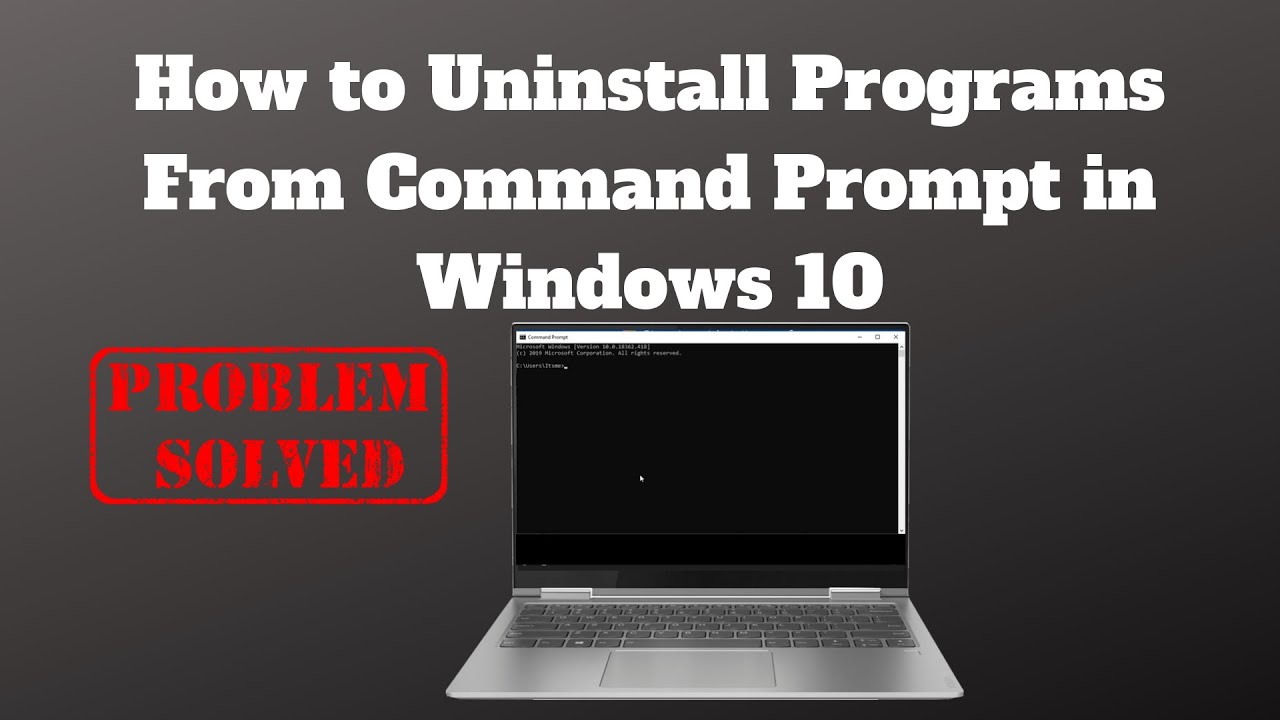

- #Wmic uninstall parameters how to
- #Wmic uninstall parameters update
- #Wmic uninstall parameters full
- #Wmic uninstall parameters software
- #Wmic uninstall parameters code
#Wmic uninstall parameters update
To uninstall all Java versions besides Java 8 Update 65 wmic product where "name like 'Java%%' and not name like 'Java 8 Update 65%%'" call uninstall /nointeractive If you would like to uninstall releases before version 7 (they previously added (TM) in the name) use: wmic product where "name like 'Java(TM)%%'" call uninstall /nointeractiveįor only version 7 and its sub-releases: wmic product where "name like 'Java 7%%'" call uninstall /nointeractive
#Wmic uninstall parameters software
If you want to remove all Java-related software use the following line: wmic product where "name like 'Java%%'" call uninstall /nointeractive It can with a single command-line remove all older versions of the program, without the need of third-party software. If I run the parameters locally it works every time, but through KACE. Launch (KACESYSDIR)\cmd.exe with params /c wmic product where name'Blue Jeans' call uninstall /nointeractive. I came across a built in solution using Windows Management Instrumentation Command-line (WMIC). I'm trying to uninstall some old app versions via WMIC name calls, but for whatever reason I simply cannot get it to run in K1000 scripting. The latest current version (2.6) does not allow a silent uninstall. However it did not function the way I wanted. I started by trying out JavaRa which I’ve used previously for other customers. They are currently running Windows 7 and Windows 8, so somewhat modern operative systems :) The clients have a large quantity of outdated versions of Java, which needed to be uninstalled before we deployed the newest version. They’ve been planning an implementation of a new online service which requires the latest Java version. More reliable than looking for registry keys that contain the applications Uninstall string.I received an inquiry from one of my mid-size (100-200 users) customers today. After you save the policy, the deleted threshold configurations are removed from the selected PATROL Agents. To remove a threshold, click the action menu for that threshold and select Delete.
#Wmic uninstall parameters code
Points ofĪfter facing trial and error I have successfully used this code in my own personal projects to uninstall my applications during certain update scenarios… I have found this method To modify parameters of a threshold, click the action menu for that threshold and select Edit. Yes, this search is resource intensive and may take a bit to list applications depending on your system specs. Take note that the attached code contains a BackgroundWorker that prevents the UI locking up during the WMI search (which Cast hr to a boolean value to get the results returned. Method (the second parameter in InvokeMethod() is to pass any parameters, which "Uninstall" takes nothing, thus null.

#Wmic uninstall parameters how to
Above I demonstrated on how to call this synchronous Instance of the application we want to uninstall we need to invoke the

Now that our ManagementObject is set to an but as for now you can make due with the following Powershell cmdlet. This member cannot be used by partially trusted code, so you should be an administrator or add a manifest to your application with “requireadministrator” set. Just realized when writing this that i haven’t talked about how to check if a remote computer has a specific Software Update or Hotfix which i have to do a blog post on that later on and last but not least there’s really good reports in SCCM for checking that also. Windows 7 Application Compatibility https. Archived Forums > Windows 7 Application Compatibility.
#Wmic uninstall parameters full
Note: ManagementObject.Invoke() requires Full trust for the immediate caller. Remove From My Forums Answered by: WMIC with Arguments/ Parameter while use PROCESS CREATE CALL exe. The number of WMI properties that can be monitored has increased with every new version of Windows. Now that we know the name of the application, we do not need to enumerate the entire list of applications installed:Ĭopy Code object hr = mo.InvokeMethod( " Uninstall", null) The last element returned by WMIC is a single character (an empty line), when running WMIC in a FOR loop you might need to remove this, particularly if delayed expansion is involved. Note that the uninstall method is pretty much the same as our method to enumerate and list installedĪpplications, the only difference here is we now need to Invoke the Win32_Product method to “Uninstall” (there are a list of other available methods in the link above). Now that we have a list of installed applications we should be able to pass the this program may not have a name property

New ManagementObjectSearcher( " SELECT * FROM Win32_Product") įoreach (ManagementObject mo in mos.Get())


 0 kommentar(er)
0 kommentar(er)
